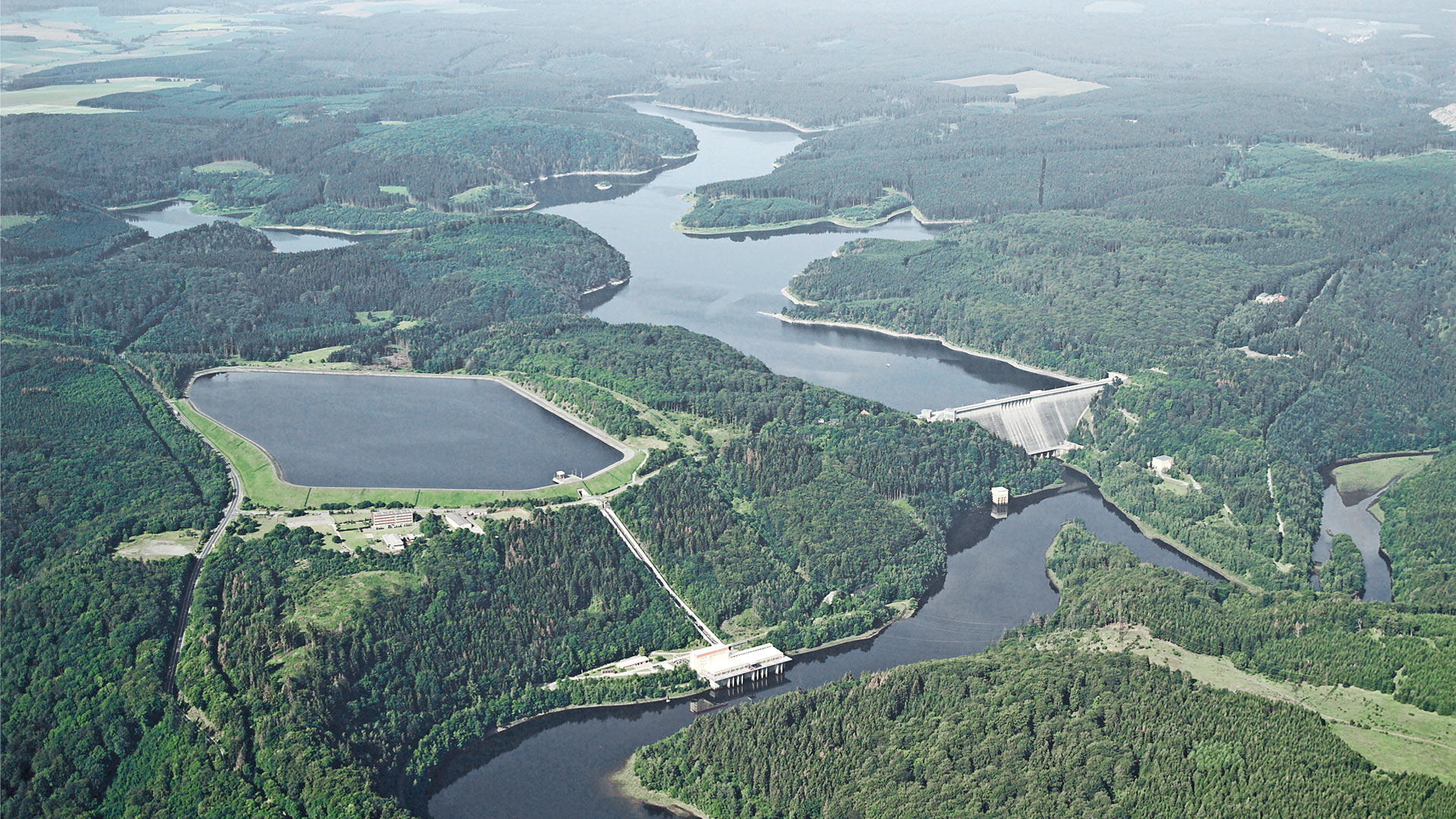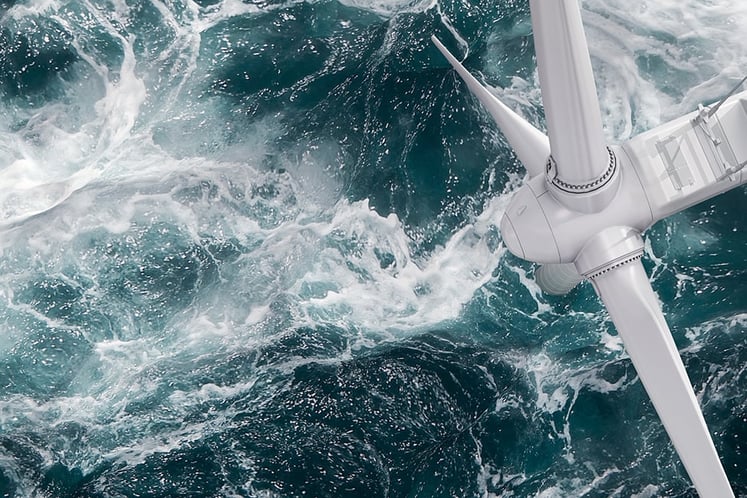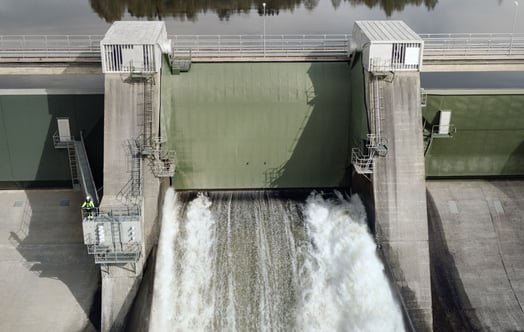Pumped hydroelectric power stations offer the ability to store electrical energy easily, efficiently, and in large quantities. The technique is currently seeing a resurgence in popularity.

Wendefurth pumped hydro power plant in Germany.
In 2010, Germany introduced its “Energiewende” or “Energy Transition” initiative, which aims to create a sustainable, reliable and affordable energy system. Under the plan, Germany’s greenhouse gas emissions are to be reduced by 80 to 95 per cent from 1990 levels by 2050, and the proportion of renewables in the country’s energy mix is to be increased to at least 60 per cent. Pumped hydroelectric storage plants are increasingly becoming a key driver in these efforts.
This form of hydroelectric power enables the pumping and storage of energy in the form of water into a basin or reservoir. When stored water is released and passes through turbines, it is converted into electrical energy – simple, reliable and efficient. Several Vattenfall hydroelectric storage facilities are located in the east and southeast of the country.
“I like to describe pumped hydroelectric power stations as the Swiss Army knives of the energy industry,” says Peter Apel, Vice President Hydro Power Plants Germany.
“The ability to store energy and the technical specifications of these plants enable us to deliver a large number of energy products. The plants also serve as the backbone for German grid operators by offering black start capability.” Black start refers to restoring a power station or grid to operation without relying on an external power transmission.
A battery ready for use
For a future that must be fossil-free, and to make energy as predictable as possible, pumped hydroelectric power stations offer an opportunity that several other fossil-free energy sources do not. If it’s not windy, wind turbines stand still, and if it’s cloudy for long periods, solar panels become inefficient, thereby undermining grid stability. However, the ability of pumped hydroelectric power stations to store energy in the form of water essentially turns them into a kind of battery that can be used when needed.
“The greater the variation in the grid, the greater the need for balance,” explains Apel.
Maintaining this balance is the single most important role of pumped hydroelectric power stations. The battery-like function they offer also means that they can create balance almost immediately.
“If electricity consumption is high, pumped hydroelectric power can supply energy to the grid in seconds,” explains Martin Loga, Head of Plant Management at Vattenfall Wasserkraft GmbH.
This reactivity and flexibility also make pumped hydroelectric power stations highly profitable: you can store when prices are low and release water when they are high. In addition to enabling energy type-freedom and offering predictability, pumped hydroelectric power stations and the string of Vattenfall Wasserkraft plants near rivers also have another positive environmental effect on the river areas where they are located. Reservoirs, such as the enormous artificial lake Saale Cascade, can be used to mitigate the effects of floods and store water for periods of drought.
“The system is becoming increasingly sophisticated in its ability to adjust flow throughout the year,” says Apel. “We work closely with authorities to manage this in the best possible way.”
Shut down plant to be reopened
Germany is leading the way in many respects when it comes to pumped hydroelectric power stations, but one of the clearest examples of the renaissance of this type of power generation can be found in Sweden. Thirteen years ago, a pumped hydroelectric power station in Juktan, just outside Umeå in the northeast of the country, was shut down – permanently, most people assumed back then. But now, Vattenfall is planning to reopen the plant. A pilot-study has been conducted and in 2027 the company plans to invest in the facility, which was Sweden’s largest pumped hydroelectric power station when its production peaked from 1979 to 1996.
“A lot’s happened to the Swedish electricity system. The energy production portfolio has changed. We have less nuclear power and more wind, which has reduced flexibility in the system. Hydro pumping power makes a major contribution to addressing this,” says Johan Dasht, head of Vattenfall’s Hydro Power.
“Looking ahead, Sweden will roughly double its electricity production in the coming 25 years. We’ll do that with more wind and more nuclear power plants, but despite this, the value of flexibility in the system will increase. At times of excess production, for example when it’s very windy and prices fall, we can take advantage of this by pumping water up [to higher elevation reservoirs]. And at times of greater demand, we can release water in the other direction to generate electricity.”
Extraordinary capacity
Bringing Juktan back into service would significantly increase Sweden’s production capacity. The plant could potentially produce around 380 MW, roughly equivalent to one third of the capacity of a nuclear power plant.
“We could run the plant for about four days around the clock. So we’re talking about an extraordinarily large storage capacity. To make this more tangible: at maximum storage capacity, we would be able to fully charge every one of the roughly half a million electric cars in Sweden. Three times over.”
The challenge to reopening Juktan now centres around getting all the necessary environmental permits – and financing – in place, because the additional capacity that Juktan could offer will be needed in the future.
“All electricity production in Sweden is fossil-free, and it has been for many years. We’re now looking at how we can transport ourselves and how we can produce everything else fossil-free. To do that, we basically need to double the amount of electricity we produce today. The largest proportion of that increase will come from wind and nuclear power, but I’m convinced that pumped power can be another leg to stand on because I get a lot of questions about Juktan.”

Subscribe to the newsletter THE EDIT
THE EDIT is Vattenfall's new monthly newsletter. Each issue highlights a new burning issue from the world of sustainable energy and fossil freedom.



